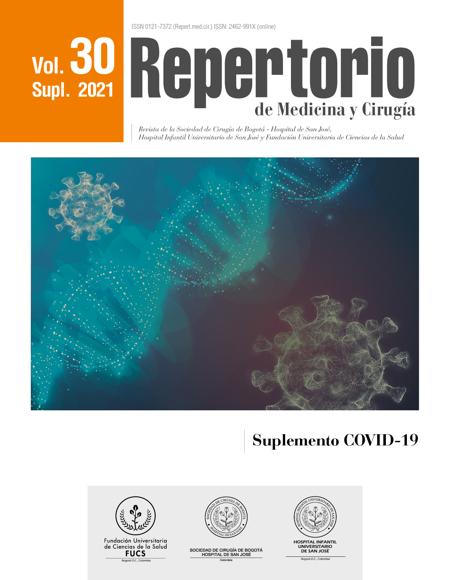SARS-COV-2 worldwide lethality
Letalidad por SARS-COV-2 a nivel mundial
![]()
![]()

Show authors biography
Introduction: the novel coronavirus 2019 is a positive-sense single-stranded RNA virus belonging to the Coronaviridae-Nidovirales order. Since the emergence of coronavirus disease 2019 (COVID-19) in December 2019, the disease has nimbly transformed in a pandemic, intimidating societies worldwide. Objective: to determine COVID-19 worldwide lethality as of July 15 2021. Methodology: an experimental research design was used. Data was obtained from the Johns Hopkins University COVID-19 webpage. Results: among the countries with the highest COVID-19 death rate as of July 15 2021 were: Peru (9.34), Mexico (9.0), Hungary (3.71), Romanía (3.17) and Italy (2.99) and the countries with the lowest lethality rate were: the Netherlands (1.01), Irak (1.21), Jordan (1.3), India (1.33) and Sweden (1.34). Conclusion: viral infection diagnosis will preexist recovery or death within days to weeks, therefore, the number of deaths must be cross-checked with previous case counts, which explains this delay which increases the estimation of the lethality rate.
Article visits 14797 | PDF visits 4210
Downloads
- Addo PC, Fang J, Bakabbey Kulbo N, Liangqiang L. COVID-19: fear appeal favoring purchase behavior towards personal protective equipment. The Service Industries Journal. 2020;40(7-8):471-490. https://doi.org/10.1080/02642069.2020.1751823
- Fang B, Meng QH. The laboratory’s role in combating COVID-19. Crit Rev Clin Lab Sci. 2020;57(6):400-414. https://doi.org/10.1080/10408363.2020.1776675
- Desouky E. Urological surgery in the COVID-19 era: Patient counselling and informed consent. Arab J Urol. 2020;18(2):62-64. https://doi.org/10.1080/2090598X.2020.1772032
- Dryhurst S, Schneider CR. Kerr J, Freeman, AL, Recchia, G. Van der Bless, A. Spiegelhalter, D. Van der Linden, S. Risk perceptions of COVID-19 around the world. J Risk Res. 2020;40(7-8):994-1006. https://doi.org/10.1080/13669877.2020.1758193
- Syed Sharfuddin. The world after Covid-19. The Round Table. 2020;109(3):247-257. https://doi.org/10.1080/00358533.2020.1760498
- Moreno-Altamirano A, López-Moreno S, Corcho-Berdugo A. Principales medidas en epidemiología. Salud Pública de México. 2000;42(4):337-348.
- Quintana-Salgado. L. Medidas de frecuencia en epidemiología. [Internet]. 2015. [Citado 10 de junio de 2021]. Disponible en: https://es.slideshare.net/lualberts20/medidas-de-frecuencia-en-epidemiologa-2015
- Díaz Pinzón JE. Medidas de frecuencia por COVID-19 en Bogotá DC. Repert Med Cir. 2020;29(Núm. Supl.1):94-98. https://doi.org/10.31260/RepertMedCir.01217372.1110
- Díaz Pinzón JE. Estimación de las tasas de mortalidad y letalidad por COVID-19 en Colombia. Repert Med Cir. 2020;29(Núm. Supl.1):89-93. https://doi.org/10.31260/RepertMedCir.01217372.1103
- Díaz Pinzón JE. Análisis de los resultados del contagio del COVID-19 respecto a su distribución geográfica en Colombia. Repert Med Cir. 2020;29(Núm. Supl.1):60-64. https://doi.org/10.31260/RepertMedCir.01217372.1082
- Díaz Pinzón JE. Estimación de la prevalencia del COVID-19 en Colombia. Repert Med Cir. 2020;29(Núm. Supl.1):99-102. https://doi.org/10.31260/RepertMedCir.01217372.1115
- Johns Hopkins University. COVID-19 Dashboard [Internet]. The Center for Systems Science and Engineering (CSSE) 2021 [citado junio 30 de 2021]; Disponible en: https://www.arcgis.com/apps/dashboards/bda7594740fd40299423467b48e9ecf6
- Gómez F. Una estimación precisa de la tasa de letalidad es imposible en la actualidad [Internet]. Pontificia Universidad Católica de Valparaíso [citado junio 30 de 2021]; Disponible en: http://www.pucv.cl/uuaa/ciencias/noticias/una-estimacion-precisa-de-la-tasa-de-letalidad-es-imposible-en-la












